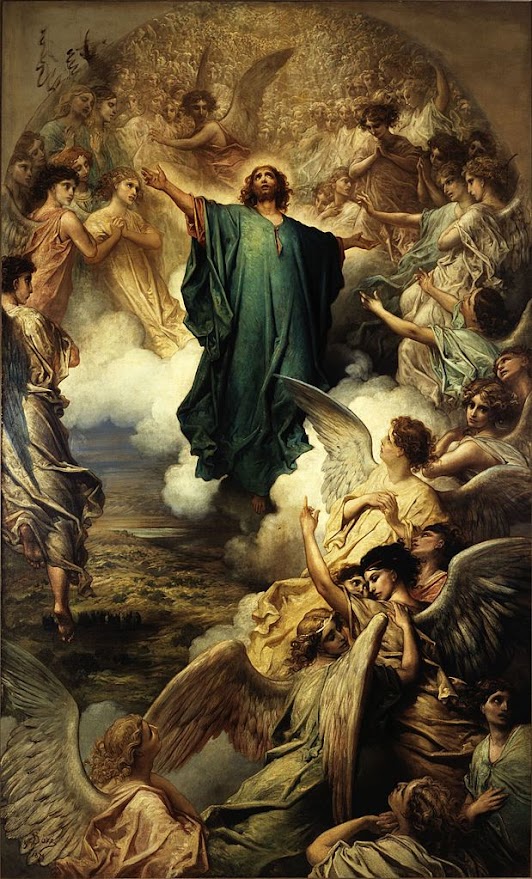Our visual image of Victorian London is largely fixated on its sordidness—cramped streets, dark alleys, desolate slums, overcrowding, and illicit dens. Two people are responsible for creating in our heads such pictures of destitution and filth—one is Charles Dickens, whose works largely revolved around grinding poverty, and the other is French illustrator Gustave Doré. Doré (1832 – 1883) was a prolific engraver, artist, illustrator, and sculptor, who became very popular both in France and England by being an extremely successful illustrator for books and magazine.
He began his career early—at the age of fifteen—working for the French paper Le journal pour rire. Before he was twenty-five, his illustrations had adorned the books of several prominent writers of his time such as Cervantes, Rabelais, Balzac, Milton, Byron, and Dante. His illustrations of Cervantes's Don Quixote left such an indelible impression on the collective imagination of the public that it forever changed how subsequent artists, stage and film directors would represent the various characters in the book in their medium. Doré's illustrations for the English Bible in 1866 was such great success that it earned him a major exhibition of his work in London, eventually leading to the foundation of his very own Dore Gallery.
In 1869, Dore teamed up with journalist Blanchard Jerrold to produce a comprehensive portrait of London. For the next four years, Jerrold and Dore explored the dark underbelly of the largest, most fashionable, and most prosperous city in the world, visiting night refuges, staying in cheap lodging houses and making rounds of the opium den. The duo were often accompanied by plain-clothes policemen. They travelled up and down the river and attended fashionable events at Lambeth Palace, the boat race and the Derby.
This is part 22 of a 25-part series on later works of Gustave Doré:
1879 Arioste by Roland Furieux - continued from part 21:
 |
| 1879 The Owls black crayon and watercolour on paper 86 x 50 cm © Musée des Beaux-Arts de Dijon. Photo François Jay |
 |
| 1879 The Ascension oil on canvas 61 x 42 cm Petit Palais, Paris |
 |
| 1883 The Ascension oil on canvas 335.2 x 233.6 cm Bob Jones University Museum & Art Gallery, Greenvile, South Carolina |
 |
| c1879 The Giants are Captured watercolour with touches of brush and brown ink, over graphite, on cream wove board 44.5 x 36.5 cm Art Institute of Chicago, IL |
 |
| c1879 The Princess is Held Captive watercolour with touches of gouache, and pen and black ink on cream wove paper 44.4 x 36.4 cm Art Institute of Chicago, IL |
 |
| cast 1880 Fear or Motherly Love bronze 59 cm high |
 |
| cast 1880 Fear or Motherly Love bronze 59 cm high |
%20bronze%2036.5%20cm%20high%20Museum%20of%20Fine%20Arts,%20Boston,%20MA%20Museum%20of%20Fine%20Arts,%20Boston,%20MA.jpg) |
| 1880-81 Joyeuseté (A Saute-Mouton) bronze 36.5 cm high Museum of Fine Arts, Boston, MA |
%20Detroit%20Institute%20of%20Arts,%20MI.jpg) |
| 1881 Andromeda engraving and etching printed in black on chine collé 43.1 x 30.4 cm (image) Detroit Institute of Arts, MI |
 |
| before 1881 Souvenir from Loch Carron, Scotland oil on canvas 130 x 195 cm |
 |
| 1881 Fairy Land watercolour with touches of gouache, over graphite, on cream wove paper 64.8 x 89 cm Art Institute of Chicago, IL |
 |
| 1881 Fairy Land detail |
%20Engraver;%20Louis%20Godfrey%20National%20Gallery%20of%20Victoria,%20Melbourne,%20Australia.jpg) |
| 1881 The House of Caïaphas engraving on chine collé 55.2 x 82.8 cm (image) Engraver: Louis Godfrey National Gallery of Victoria, Melbourne, Australia |
%20Minneapolis%20Institute%20of%20Art,%20Minnesota.jpg) |
| 1881 Via Mala graphite, pen and India ink on paper 53.9 x 36.6 cm (image) Minneapolis Institute of Art, Minnesota |









































